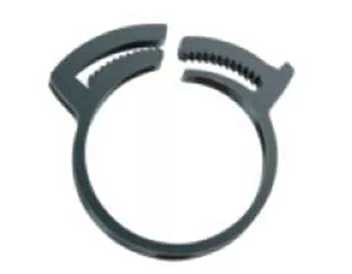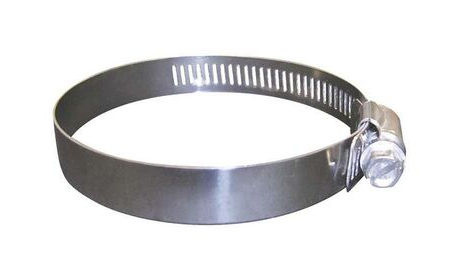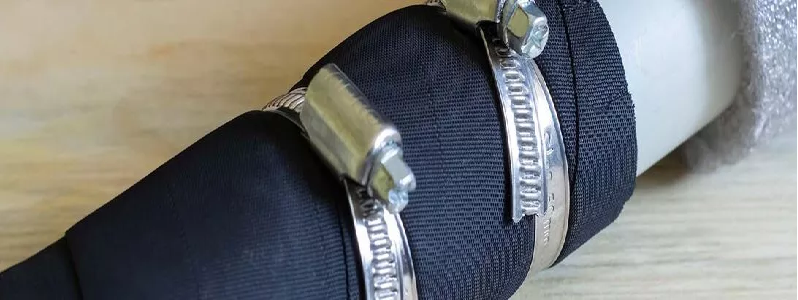
- +86 18120750932
- colin@xmsinuowei.com
- www.xmsinuowei.com


“Jubilee” is actually an example of a brand name that has become synonymous with a type of product, in this case a style of hose clamp. In this article, we’ll refer to them as they’re most commonly known.
Hose clamps are designed to secure a hose over a fitting, such as a spigot or barb, acting as a seal to prevent fluid from leaking at the connection. They also stabilize the hose connection. They’re predominantly used in the plumbing and automotive industries but are also used in other applications and to prevent leaks during the transport of liquids, chemicals and gases.
There are three main hose-clamp types:

Plastic hose clamps
The ratcheting teeth interlock to provide a strong, secure. These can be installed quickly by hand and squeezed with pliers to tighten the grip. Sometimes referred to as a snap grip, snapper or herbie grip, these hose clamps are made of plastics. Nylon is an excellent choice, as it’s strong while providing flex for easier closure. Economical, lightweight and reusable.
Applications and industries:
Specialty vehicle and automotive fuel lines, airlines, drain lines
Pumps and hydraulic systems in medical equipment (should NOT be used in other hydraulic-pressure applications)
White goods, venting systems and garden hoses

Worm-drive hose clamps
These hi-torque worm clamps are the style meant when referring to jubilee clips. They feature a helical-threaded screw, or worm gear, which is housed in the clamp. When the screw is turned, it acts like a worm drive pulling the threads of the band. The band then tightens around the hose or tube.
The high clamping force makes this a heavy-duty jubilee clip. Available as stainless-steel or steel hose clamps, these are ideal when space is restricted or hard to reach. NOT recommended for soft or silicone hose. For small hose assemblies, consider mini worm-drive hose clamps.
Applications and industries:
· Wire-reinforced hoses
· Automotive fuel lines and exhaust hoses
· Plumbing – seal hoses, water pipes and marine sink outlets
· Signage, temporary repairs, sealing large containers

T-bolt hose clamps
Designed to provide a secure, air-tight seal on applications with larger diameters, where high vibration occurs. The clamp’s bolt is inserted through the hole in the hose clamp body. The nut is then tightened from underneath with a wrench or pliers. As stainless-steel hose clamps, t-bolts are ideal as clamps for high-pressure hose and for use with silicone hoses.
Applications and industries:
Specialty vehicles and automotive
· Maintain pressure on gas lines when engine is off
· Gas lines cut too short or needs a fitting added
· Secure a bleeder valve or safety valve in the gas line for putting gas tank at a specific pressure
Sealing off water lines when hoses and tubing are used. Examples:
· Swimming pool plumbing
· Aquaponics systems
· Hydroponics systems
· Drip irrigation

A torque wrench is the best tool for installing a hose clamp, though a screwdriver will work too. We’ll use the popular worm-drive hose clamp for our example below. Follow these steps for how to tighten a hose clamp too:
1. Loosen the hose clamp by turning the clamp’s screw counterclockwise.
2. Attach it to the edge of the hose with the screw head in the direction needed to make contact with the tool you’re using.
3. Place the edge of the hose around the fitting.
4. Turn the screwdriver or torque wrench concentrically to tighten the clamp to secure the hose in place.
Adhere to the clamp’s torque specification, which is given in inches by the clamp manufacturer. Be careful not to overtighten, which will only damage the threaded part of the clamp and lead to the clamp failing.
A t-bolt hose clamp is similarly installed:
1. Insert the bolt through the clamp’s body.
2. Tighten the nut from underneath using a wrench or pliers.
The two halves of the clamp are then tightened against each other, and just like that, you’re done.
Specifically, let’s look at how to remove spring hose clamps, which is another name for t-bolts, which have both a drive and a bolt head.
1. Loosen the bolt with a flat-head screwdriver or a socket wrench.
2. Turn the bolt counterclockwise until it’s loose, then pull it off the hose.
Source: Essentra Components

Service online